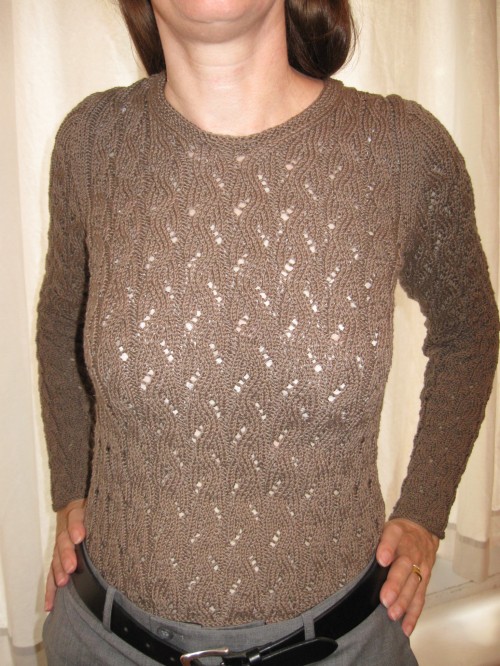When it comes to Bs and knitting, there are lots of choices. Living in a New York City apartment where space is at a premium (even with a stash-friendly husband), balls of yarn, baskets of yarn and bags of yarn rule. They are more of an organizing principle which is critical space is limited and stash enhancement just happens.
B is for Balls of Yarn. I have learned over time that it’s important to keep the last remanent ball of yarn for any completed garment in case repairs or changes are needed. It can be a snag or total restructuring when the garment grows in unanticipated ways. I keep these colorful balls in an old glass jar/vase which doubles as a decorative piece next to our non-functional fireplace. Old swatches are also kept here since they can be unraveled in case of emergency.
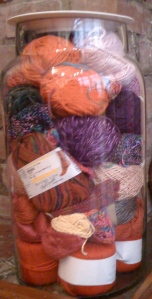
Balls of Yarn stored in large glass jar as decoration
B is for Baskets of Yarn. Baskets are another great way to store yarn in a decorative manner. Since they are out in the open, I keep some of my non-wool cones in baskets. I find that the serving baskets from catered events can be reused to create useful ways to store excess stash. (Please note that there wasn’t room to show the indoor tree.)
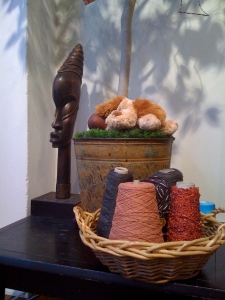
Baskets of Yarn-Another way to decorate with yarn!
B is for Bags of Yarn. One lesson that I learned from the Carols with whom I knit that it is important to have nice places to store your knitting projects. They were upset with me for carrying my projects in plastic bags from the grocery store. (Mind you, I did use the green twistees to allow the yarn to be pulled from the balls.) Enter the project bags and supply bags. Here is an assortment of bags that I use.
One of my favorites is the metric tape covered bag where I keep my knitting tools such as tape measure, scissors, crochet hooks, stitch markers and needles. It’s hard to believe that I got it at Filene’s Basement!
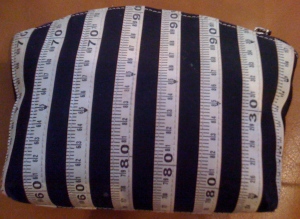
Metric Ruled Tape Measure Knitting Tool Bag
I am attached to the bags given to me by stores that I have visited when I have been out of town. Among my favorites are the off white bag from Loopy Yarns in Chicago’s Loop where I store one of my current projects and Loop‘s the light blue bag from Philadelphia where I store my WIPs near the couch.
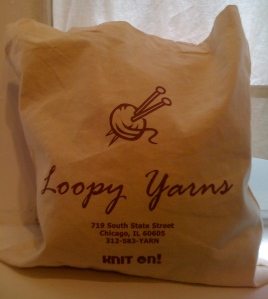
Loopy Yarns bag - A Chicago Yarn Store Souvenir!
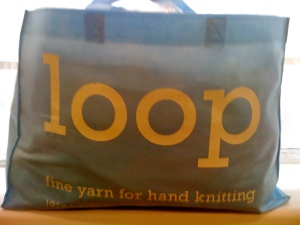
Loop's Blue Shopping Bag - A Philadelphia Yarn Store Souvenir!
Then there are the cloth bags that my friend Vere Halstead made for me. I was lucky to get the yellow and orange island print. Vere works in the design department of CUNY and hopefully will set up an Etsy store to sell more of these great bags. I keep my special projects here!
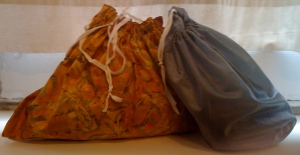
Vere Halstead's Knitting Bags - Where I keep my special lace projects!
Lastly are the big, extra thick plastic storage bags where I keep my unwound stash which aren’t worthy of a photograph since they’re stored at the bottom of my closet.
How do you store your stash? Is it beautifully displayed or hidden from view?
Written by Editor-in-Chief – Knitted Yarns

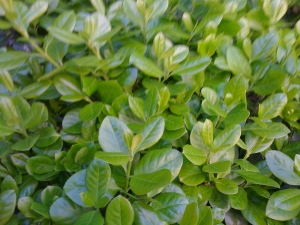
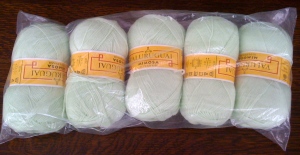
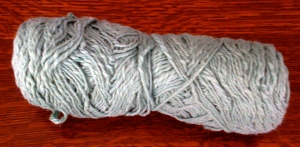
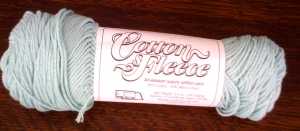
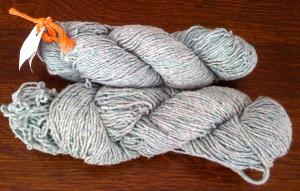
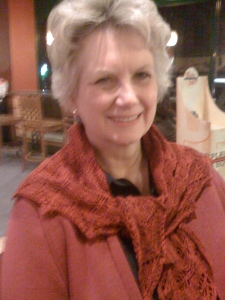
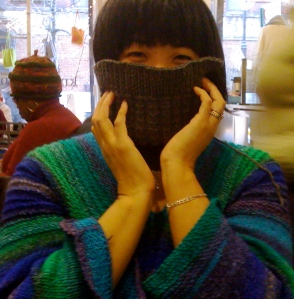
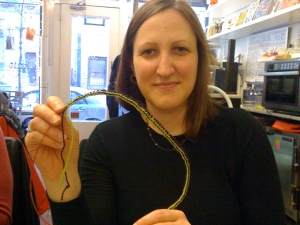
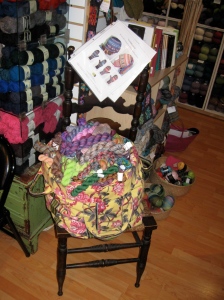
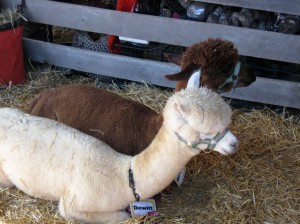
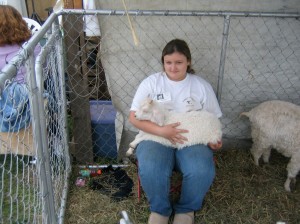
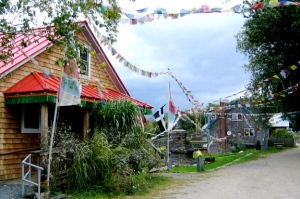
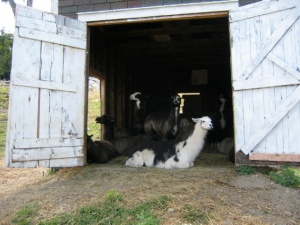
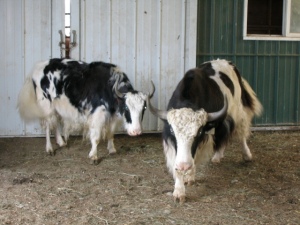
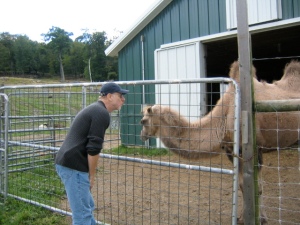
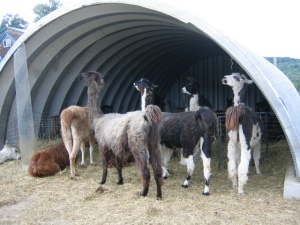
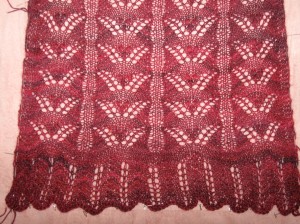
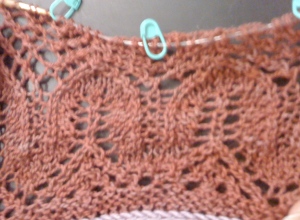
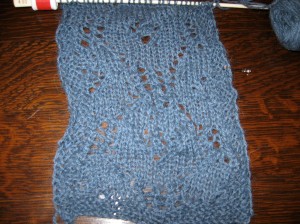
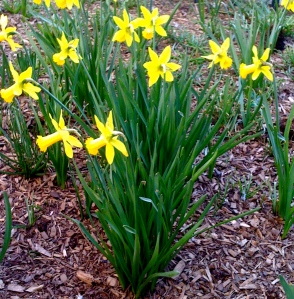
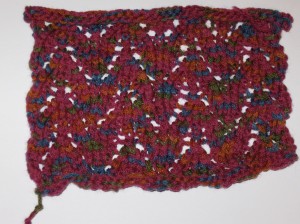

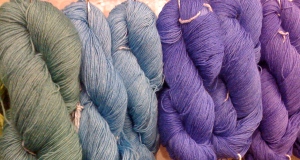
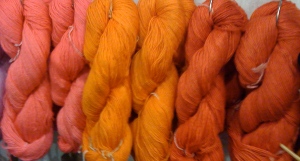
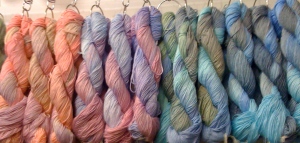
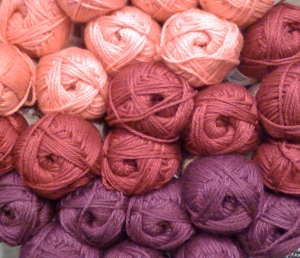
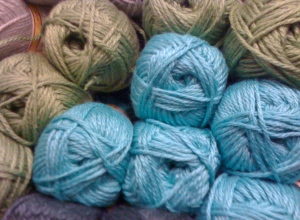
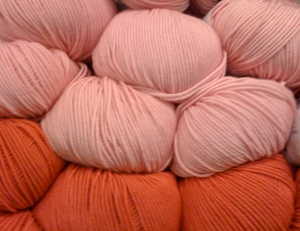
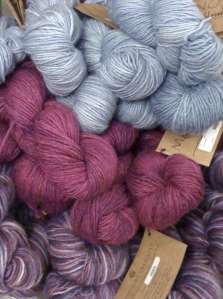
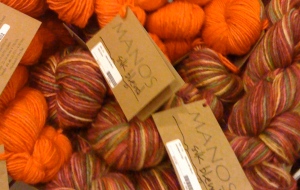






 Inspired by my friend Mary at the
Inspired by my friend Mary at the 